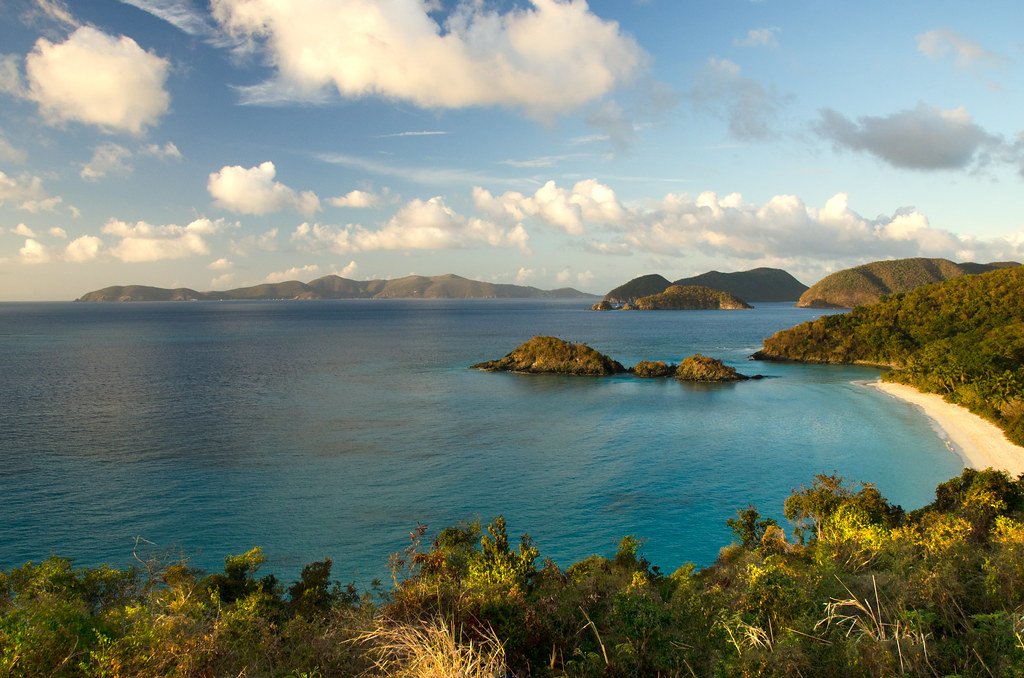Due to lead in the water in the US Virgin Islands, Biden declares an emergency.
This week, tests on St. Croix revealed levels of lead in the water that were more than 100 times higher than the threshold set by the Environmental Protection Agency. These results are among the worst that a U.S. community has seen in decades, prompting President Joe Biden to declare an emergency over lead-in-water contamination in the U.S. Virgin Islands.
Executive director of Crucian Heritage and Nature Tourism, Inc. and local Frandelle Gerard remarked, “On a personal level, it’s been frightening and frustrating.”
Authorities started handing out bottled water to the locals and ordered them to stop using their taps. Lead exposure can have a terrible impact on a child’s IQ, behaviour, and development.
However, specialists that The Associated Press spoke with claimed that the alarming findings might not be accurate because they were derived from tests that did not adhere to EPA regulations.

“The information ought to be discarded,” declared Marc Edwards, a lead and water specialist from Virginia Tech who contributed to the discovery of Flint, Michigan’s lead issues.
It won’t be the first time if the information provided to St. Croix residents turns out to be false. In communities where there is a lead crisis, poor information frequently makes people unclear about what to believe. Officials in Flint first covered up elevated levels of lead. Even though lead pipes—not the source—are typically the issue, officials in Newark stressed the safety of the city’s reservoirs when levels increased. Relying on bottled water, the people of Benton Harbour, Michigan, waited months for inspectors to certify that filters actually functioned.
Some of those problems were avoided by officials on the Caribbean island of St. Croix, who promptly informed the locals of the outcome. An emergency was proclaimed by the governor.The leader of the Virgin Islands Water and Power Authority, Andrew Smith, stated, “We don’t avoid talking about this.”
According to Edwards, there is an issue with the way the samples were obtained, and the extremely high results do not accurately reflect reality. Workers typically use water from a domestic tap to test for lead. However, the samples taken from the metre were the ones that tested so high on St. Croix.

He said, “You are literally ripping the leaded brass apart when you unscrew it, and a chunk of leaded brass gets in your sample.” It generates findings that are inflated.The Environmental Defence Fund’s main expert on chemicals, Tom Neltner, concurred that the water meter’s testing isn’t reliable. He claimed that there were “a lot of oddities” in the way St. Croix’s sample was carried out.
Thus, parents in St. Croix are still unaware of the amount of lead their children were exposed to.In September, officials conducted tests at faucets in accordance with EPA lead testing guidelines. These findings demonstrated the water’s safety.
Residents of the island, however, who had long had to live with the discoloured water, claimed that in recent months, the colour was getting worse. In order to determine whether the utility’s pipes were the issue, officials collected further samples, this time at the metre. These tests are the ones that initially found lead levels abnormally high.
Smith remarked, “The results shocked and surprised us all.”The findings of the retest were still too high. However, the numbers were low in two schools and other areas.Soon, there ought to be a more conclusive response. In early November, local and federal officials conducted extensive tests to identify the underlying reason. The final report should be available by mid-December.According to Smith, the utility collaborated with the EPA on the sampling, and roughly 3,400 houses are impacted.
Despite the fact that the tests did not follow protocol, EPA water expert Christine Ash advised people who have utility water piped into their homes “to be cautious and not drink the water until we are able to do further investigation to identify if there is a potential source of lead and what it might be.”Thankfully, not everyone in St. Croix falls into that category.
Many rely on rainwater collected in cisterns for their needs.The biggest hazard to drinking water in the continental United States is lead pipes in many communities. But on the island, it isn’t the issue. According to Smith, the cause is actually brass fittings, which can corrode into the water and contain lead.

In addition, the water system requires maintenance and repairs regardless of the test results. Smith is running water through it with his coworkers. The water might absorb impurities when it is left untreated. They are also replacing lead-containing parts and improving the way their water is treated to make it less corrosive. According to Smith, the replacement work might take a year or more. Furthermore, significant upgrades are scheduled for the island’s antiquated water supply in the upcoming years.
People on the island are overburdened, according to Gerard.
She continued, pointing out that locals had recently experienced a catastrophic hurricane, a pandemic, and water poisoning from a refinery. “There’s this sense of, well, what’s next for St. Croix?” she asked. She said that a lot of people gave up on tap water a long time ago and that it’s difficult to interpret these most recent findings.
Being somewhat literate, we have nearly as many questions as answers after reading the reports. She said that a lot of people might not be aware of how high these lead test results are.
She stated that the interim solution of running a lot of water through the pipes to lower lead levels is inappropriate for the island.
Gerard stated, “We live in a water-conserving society.” “Water is a valuable resource.”
The Walton Family Foundation provides funding to the Associated Press so that it can cover environmental and water policies.
This week, tests on St. Croix revealed levels of lead in water that were more than 100 times higher than the threshold set by the Environmental Protection Agency. These results are among the worst that a U.S. community has seen in decades, prompting President Joe Biden to declare an emergency over lead-in-water contamination in the U.S. Virgin Islands.
Executive director of Crucian Heritage and Nature Tourism, Inc. and local Frandelle Gerard remarked, “On a personal level, it’s been frightening and frustrating.”
Authorities started handing out bottled water to the locals and ordered them to stop using their taps. Lead exposure can have a terrible impact on a child’s IQ, behaviour, and development.
However, specialists that The Associated Press spoke with claimed that the alarming findings might not be accurate because they were derived from tests that did not adhere to EPA regulations.
“The information ought to be discarded,” declared Marc Edwards, a lead and water specialist from Virginia Tech who contributed to the discovery of Flint, Michigan’s lead issues.
It won’t be the first time if the information provided to St. Croix residents turns out to be false. In communities where there is a lead crisis, poor information frequently makes people unclear about what to believe. Officials in Flint first covered up elevated levels of lead. Even though lead pipes—not the source—are typically the issue, officials in Newark stressed the safety of the city’s reservoirs when levels increased. Relying on bottled water, the people of Benton Harbour, Michigan, waited months for inspectors to certify that filters actually functioned.
Some of those problems were avoided by officials on the Caribbean island of St. Croix, who promptly informed the locals of the outcome. An emergency was proclaimed by the governor.The leader of the Virgin Islands Water and Power Authority, Andrew Smith, stated, “We don’t avoid talking about this.”
According to Edwards, there is an issue with the way the samples were obtained, and the extremely high results do not accurately reflect reality. Workers typically use water from a domestic tap to test for lead. However, the samples taken from the metre were the ones that tested so high on St. Croix.
He said, “You are literally ripping the leaded brass apart when you unscrew it, and a chunk of leaded brass gets in your sample.” It generates findings that are inflated.
The Environmental Defence Fund’s main expert on chemicals, Tom Neltner, concurred that the water meter’s testing isn’t reliable. He claimed that there were “a lot of oddities” in the way St. Croix’s sample was carried out.Thus, parents in St. Croix are still unaware of the amount of lead their children were exposed to.
In September, officials conducted tests at faucets in accordance with EPA lead testing guidelines. These findings demonstrated the water’s safety.Residents of the island, however, who had long had to live with the discoloured water, claimed that in recent months, the colour was getting worse. In order to determine whether the utility’s pipes were the issue, officials collected further samples, this time at the metre. These tests are the ones that initially found lead levels abnormally high.
Smith remarked, “The results shocked and surprised us all.”The findings of the retest were still too high. However, the numbers were low in two schools and other areas.Soon, there ought to be a more conclusive response. In early November, local and federal officials conducted extensive tests to identify the underlying reason. The final report should be available by mid-December.
According to Smith, the utility collaborated with the EPA on the sampling, and roughly 3,400 houses are impacted.Despite the fact that the tests did not follow protocol, EPA water expert Christine Ash advised people who have utility water piped into their homes “to be cautious and not drink the water until we are able to do further investigation to identify if there is a potential source of lead and what it might be.”Thankfully, not everyone in St. Croix falls into that category.
Many rely on rainwater collected in cisterns for their needs.
The biggest hazard to drinking water in the continental United States is lead pipes in many communities. But on the island, it isn’t the issue. According to Smith, the cause is actually brass fittings, which can corrode into the water and contain lead.
In addition, the water system requires maintenance and repairs regardless of the test results. Smith is running water through it with his coworkers. The water might absorb impurities when it is left untreated. They are also replacing lead-containing parts and improving the way their water is treated to make it less corrosive. According to Smith, the replacement work might take a year or more. Furthermore, significant upgrades are scheduled for the island’s antiquated water supply in the upcoming years.








1 thought on “Due to lead in the water in the US Virgin Islands, Biden declares an emergency.”